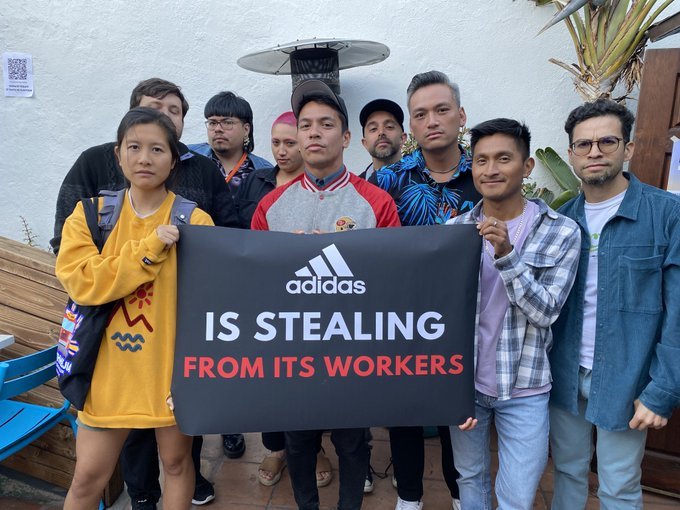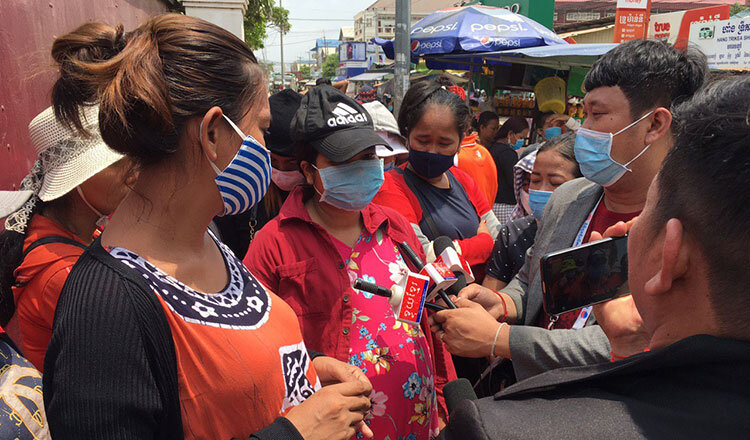Adidas is leaving the workers in its supply chain without the payments they are owed in the middle of a pandemic. adidas claims that all is fine, but the workers in its supply chain beg to differ. In eight adidas supplier factories in Cambodia alone adidas owe their workers US$ 11.7 million in wages for just the first 14 months of the pandemic - that’s $387 per worker.
Workers no longer making clothes for adidas are also owed money. Workers of the Hulu Garment factory in Cambodia who were laid off at the beginning of the pandemic are still owed 3.6million USD. In May 2022, 5600 workers at another Adidas supplier in Cambodia went on strike over unpaid wages – the factory responded by having union leaders arrested. This wage and severance theft stretches far beyond Cambodia across adidas’ global supply chain.
It is not that adidas does not know that it carries responsibility to ensure that workers in its supply chain are paid what they are owed. In 2013, adidas finally paid the PT Kizone workers in Indonesia who had fought for two years for the 1.8 million USD severance they were owed after losing their jobs.
It is time for adidas to sign a binding agreement on wages, severance and the freedom to organise to ensure that workers in its supply chain never have to go without their full wages and severance again.
“This is union-busting, plain and simple. Adidas claims to respect workers’ rights, and yet a series of violations has taken place at one of its supplier factories leading to strike action and three union leaders have been arrested. This is a clear example of authorities trying to intimidate union members and leaders in the hope of stopping workers from demanding their rights. Adidas needs to take immediate action to support workers’ rights and ensure something like this never happens again.”
Spotlight: Hulu Garment
Hulu Garment workers, April 2020. Photo: Cambodia News
Hulu Garment, a sewing facility located in Phnom Penh, Cambodia supplying adidas, as well as Amazon, Walmart, Macy’s, and LT Apparel Group, suspended its entire workforce of 1,020 workers in March 2020.
As the end of the suspension period neared, management called workers in and told them on April 22nd that, due to the Covid-19 pandemic, the factory had no orders and may need to lay off workers. Management also told workers to “sign” a document with their thumb print in order to receive their pay, explaining: “you have to sign; otherwise, we cannot wire your last wage.” All Hulu Garment workers signed the document that day, without realizing that buried in the document was a sentence stating they were resigning. Management hid the word “resignation” appearing at the top of each letter by affixing the worker’s most recent payslip to cover it.
“The workers did not resign at all, but the company said the workers have resigned. The company did this to avoid paying seniority pay to the workers.”
Workers at Hulu Garment factory protest after realizing that management had tricked them into resigning in order to save millions on severance. Photo: Chor Sokunthea / Khmer Times, April 23, 2020.
The day after, when it became clear to the workers that their employer had hoodwinked them into signing resignation letters in order to avoid paying $3.6 million dollars in severance, hundreds of them protested to demand reinstatement. A month later the factory reopened but at least 500 of the workers were never rehired. A year later, these workers continue to demand payment of the severance they would be legally owed if they had been fired, because they had been scammed and had not voluntarily resigned.



